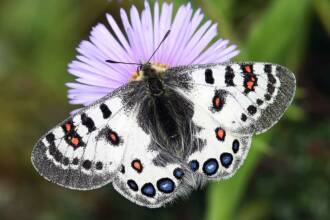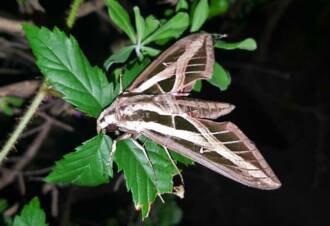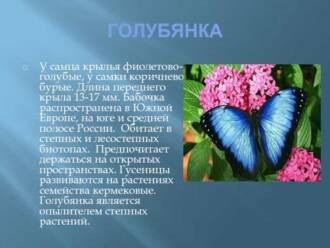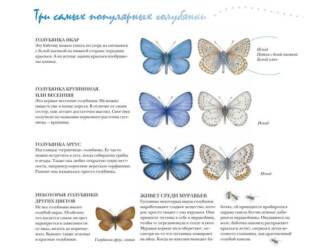Butterfly wings attract attention with a rich palette and intricate patterns. Blueberry argus (Plebejus argus) is no exception. The outward resemblance to a flower helps her to remain invisible to predators - in case of danger, it is easy to hide among the grass and go unnoticed. In addition to the protective function, the color also performs another task - a bright color indicates the health of the individual and attracts the opposite sex.

Description
The length of the front wings of the diurnal butterfly blueberry argus, related to to the order Lepidoptera, is from 11 to 15 mm. Coloration varies by gender. The males are deep blue, while the females are a discreet brown. The wings are framed by an elegant black border with a characteristic kind fringe. On the reverse side, a submarginal band with black dots is clearly visible..

The color of butterflies directly depends on the habitat and lifestyle. Nature has taken care of the safety of females - brown color allows them to easily "merge" with tree bark or hide from predators in the dark. The butterfly is common in Asia and Europe. The insect is found in moorlands as far as Japan. The exception is the Arctic regions.
The unusual name given to the butterfly in honor of the character of ancient Greek myths Argus. There are several versions about the origin of this many-eyed giant. According to one of them, Argus was born from the goddess of the earth Gaia. The butterfly is similar to this character in appearance - the pattern on the female's wings resembles eyes.

The first descriptions of butterflies of the pigeon family date back to 1815 and were made by W. Leach. He first gave the species a Latin name Cupididae, which was later replaced by Cupididae. Today, there are more than 5 thousand butterflies in the family of pigeons. On the territory of Russia, the blueberry Icarus is most common, with a wingspan of 15 mm. Males are blue, and females, unlike argus pigeons, are brown-blue.
Life cycle
Wintering takes place on lignified stems of plants. Eggs hatch into light green caterpillars with black stripes on their backs with a light border.. Insects are unpretentious in food - they choose the buds of young plants and heather buds. In the Moscow region, they can be seen on peas and clover. They are active in the evenings and at night - the caterpillar feels safer in the dark than in the daytime. Hiding in the foliage during the day.

Insects move to anthills, where they feed on larvae and pupate. It is surprising that ants of the genus Formica warmly welcome intruders into their dwellings - they are attracted by the characteristic sweetish liquid secreted by the glands of the argus pigeon.
Sometimes insects choose other places for pupation - under stones, on fodder plants or in the upper soil layer. In autumn, they lay their eggs near the anthills, and history repeats itself.
Butterflies appear in early June and live until August. Bluebirds fly close to the ground and travel short distances. They often rest on leaves and stems.

Similarity to other species
A similar species is Argus pigeon idas. Adults of this insect are larger - their size is from 13 to 18 mm. The dark border on the wings of males is narrower. The color of the caterpillars is also different - the lines on the back are not dark, but light. This species is popular in the grasslands of North America.
Video
Security
Butterflies are found on the territory of Moscow, as well as in the Moscow region in meadows near forests and in wide clearings. Insects choose places in which sunlight freely enters. Regular burning of dry grass, building in green areas and a decrease in the number of ants negatively affect the population. The Red Data Book of Moscow contains information about the pigeon argus since 2001.
Read more:





